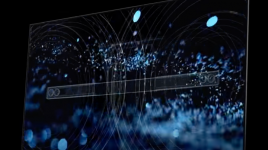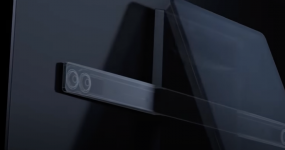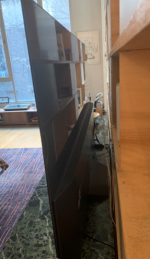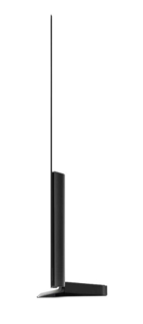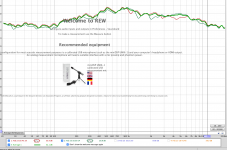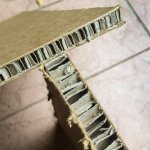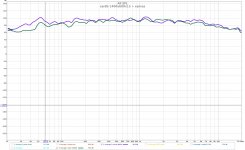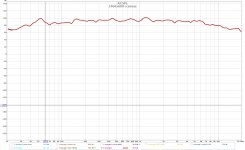Hi Eric
One exciter per 400mm wide silver ratio panel. I went for the Dayton Audio 25 jobby (Dayton Audio - DAEX25FHE-4 Framed High Efficiency 25mm Exciter). I use a supporting horizontal spine at the back, helped by the four corners of the exciter frame.
The single exciter is placed in the NXT recommended position (the 4/9ths rule IIRC). I use strips of adhesive backed neoprene tape at intervals on each side, attached to a frame on top of the 15 inch bass driver. I've steered clear of the corners with the tape. I'm wondering if more or less neoprene tape may make a difference.
I'm now trying to evaluate how well it performs with complex orchestral classical music. My sense at the moment is that detail gets lost. I cannot decide if its the panel material, underpowered amps (I'm just using 1 x 24v PSU for 2 TDA7498E amp boards), or something else.
I'm beginning to suspect the amps, and another PSU giving one per channel may help. With relatively simple music, overall quality is very good indeed.
One exciter per 400mm wide silver ratio panel. I went for the Dayton Audio 25 jobby (Dayton Audio - DAEX25FHE-4 Framed High Efficiency 25mm Exciter). I use a supporting horizontal spine at the back, helped by the four corners of the exciter frame.
The single exciter is placed in the NXT recommended position (the 4/9ths rule IIRC). I use strips of adhesive backed neoprene tape at intervals on each side, attached to a frame on top of the 15 inch bass driver. I've steered clear of the corners with the tape. I'm wondering if more or less neoprene tape may make a difference.
I'm now trying to evaluate how well it performs with complex orchestral classical music. My sense at the moment is that detail gets lost. I cannot decide if its the panel material, underpowered amps (I'm just using 1 x 24v PSU for 2 TDA7498E amp boards), or something else.
I'm beginning to suspect the amps, and another PSU giving one per channel may help. With relatively simple music, overall quality is very good indeed.
One week in
Impressions so far
Giving the speakers more power, just made them sound even better, which I didn't really think possible.
Everything I reported last week, just more so.
I have an eighty year old friend, brilliant guy, sharp as ever. Small, fit, wiry. I sat him down on the couch and played the speakers.
He couldn't stay in the seat.
At first he kept getting up and walking back and forth parallel to the speakers. He commented that the speakers sounded great from anywhere in the room. I had the same experience. These speakers seem to defy the notion of a sweet spot.
When, he started listening more intently to each track, he'd start seated, then spring to his feet, and start dancing. He either has some "soft shoe" history I don't know about, or he had channeled Bill "Bojangles" Robinson.
Agaas, I am no audio engineer, but what your friend has mentioned/noticed is my major belief as to why DML's do some things so well and can sound so natural, especially on live recordings. That is, 'all' sound emanating from the panels (front, back, and sides) is in-phase. Similar, I imagine, to how the music created at a live band performance must be. It doesn't matter how you align your panels to each other in front of you, there will always be a 'good' stereo image created.
I have always liked the sound of di/bipole speakers, and the air they give to the music, but the out of phase back soundwave(s) always causes frequency problems, problems DML's don't have, I think.
Just my thoughts, I could be wrong.
gapmedia --
Great explanation.
I remember reading about this (maybe even on this thread), but I don't think I had a conceptual framework to understand it. Kind of like the story of Columbus sailing up to an island in the Caribbean and the residents of the island could "see" the ships until men disembarked. The islanders had a conceptual blindness.
Hearing DMLs changes everything.
This has led to some possibly dangerous ideas, like can I stick an exciter on the back of an LG OLED TV and use it as a center channel of a home theater system?
I'll sit down until that thought goes away (unless someone can tell me they've tried it ;-)
Great explanation.
...'all' sound emanating from the panels (front, back, and sides) is in-phase.
I remember reading about this (maybe even on this thread), but I don't think I had a conceptual framework to understand it. Kind of like the story of Columbus sailing up to an island in the Caribbean and the residents of the island could "see" the ships until men disembarked. The islanders had a conceptual blindness.
Hearing DMLs changes everything.
This has led to some possibly dangerous ideas, like can I stick an exciter on the back of an LG OLED TV and use it as a center channel of a home theater system?
I'll sit down until that thought goes away (unless someone can tell me they've tried it ;-)
I seem to remember reading an advertisment for a TV not long ago that mentioned something about the screen being used as the speaker(s). I wonder if you would see the vibrations? It could have been for a projector screen though. Not sure.
I was lucky enough to be sitting by our swimming pool the other day, and had a similar thought about turning a couple of our glass pool fence panels into DML's...
I was lucky enough to be sitting by our swimming pool the other day, and had a similar thought about turning a couple of our glass pool fence panels into DML's...
Sony Acoustic Surface Audio explained
Sony OLED screens use Acoustic Surface audio technology to deliver immersive sound (literally) from the surface of the TV screen. We’ve seen several iterations of Acoustic Surface audio since its launch, most recently Acoustic Surface+, but all adopt the same approach.
Rather than utilise conventional speaker drivers, be they forward - or downward -firing, the Sony system relies on actuators which literally vibrate the television’s panel, in turn creating treble and mid-range audio.
These actuators connect directly to the rear of the panel, housed in aluminium baskets, which enhance rigidity for improved dynamics. And no, you can’t see the screen vibrate, even at high volumes.
These Sony TVs use either two (a stereo pair) or three (adding a centre channel) actuators, which allow sounds to be panned and positioned on the screen relative to the original sonic mix. This allows for a true stereo image with clearly defined dialogue, with vocals locked dead centre.
It’s ingenious design, but the actuators have a limit in that they can’t deliver low bass. They’re best suited for mid and high frequencies. So Sony partners them with a more conventional subwoofer on the rear of the set. This fleshes out the soundstage and adds movie-style rumble.
I've uploaded a couple of screen clip shots from the link Sonnar suggested.
Maybe not, but "actuators" sure look like "exciters".
Interestingly, "Sony TVs use either two (a stereo pair) or three (adding a centre channel) actuators" on a single OLED panel.
I don't think these TVs can deliver low bass because they don't have enough surface area to excite.
I've attached a photo of the side and one of the back of the LG TV I have.
It has "free" 57" wide x 19" high of OLED panel.
Lots of possibilities to contemplate. Among them:
Stick on a single exciter to make the TV itself into a center channel speaker. Then flank each side of the TV with a pair of DMLs (maybe plexiglass in my particular setup).
Use two exciters on the back of the TV for stereo, with a dedicated center channel DML perched above the TV.
Use three exciters on the TV. Left Center Right.
What can I use to temporarily attach exciters as I experiment?
Attachments
Looking at exciter options I also noticed that Mouser and DigiKey stock these PUI Audio exciters, as well as Visaton exciters. RS can supply Visaton and Tectonic. These PUI exciters are mostly very cheap (similar to Tectonic), but I have not seen a single post or mention where someone used one of these? Maybe they don't sound great and the universal rule - you get what you pay for - applies here? Yet, the Tectonics are popular despite being very cheap. Visaton exciters on the other hand are mostly quite expensive and also seldom get mentioned. Should I just stick to sourcing the Dayton (middle of the road price wise) exciters?
Here are two measurements of two exciters DAEX32P-4 (red) and PUI - ASX05408-HDR (green) on a 15mm corrugated cardboard (raw, untreated). Also there is an average of the two, the thick green line.
The panels in the photo are 48x60cm with thickness of 10mm and 15mm. Strangely enough the 15mm panel is half the weight of the 10mm one, about 88kg/m3 v 163kg/m3.
Attachments
For the next stage I will use a white primer for the panel and laminate a fibreglass cloth (2oz or 0.03mm) with epoxy on one side. I'd like to try a larger panel like 60x120cm.
Sonner.
What was the position and distance of the microphone in your measurements?
Also what are the graph increments 5db,10db,20db?
Steve.
What was the position and distance of the microphone in your measurements?
Also what are the graph increments 5db,10db,20db?
Steve.
Spedge,
They were placed on the floor with the panel resting on top of the exciter placed in the middle. I like the idea of mixing the type of panels (cardboard, canvas, plywood, polycarbonate-10mm twin wall) in an array to get a better frequency distribution without too much EQ. I have a DCX2496 ready to jump in (if needed) to be attached to a 6 channel Dared DV-6C amp. They will go into a room that is our cinema, music hub where there is subwoofer support, two or three hidden in the corners. I have also the option to place the subs under the floor using two of the vents from the old heating system.
I am very lucky that the WAF is very high (she was almost in a state of shock) after the first listening impression.
- The microphone was at 1m through an old NAD 7020 receiver (volume at about 9 o'clock).
- The graph's increments are 20db.
They were placed on the floor with the panel resting on top of the exciter placed in the middle. I like the idea of mixing the type of panels (cardboard, canvas, plywood, polycarbonate-10mm twin wall) in an array to get a better frequency distribution without too much EQ. I have a DCX2496 ready to jump in (if needed) to be attached to a 6 channel Dared DV-6C amp. They will go into a room that is our cinema, music hub where there is subwoofer support, two or three hidden in the corners. I have also the option to place the subs under the floor using two of the vents from the old heating system.
I am very lucky that the WAF is very high (she was almost in a state of shock) after the first listening impression.
Last edited:
Chdsl.
The easiest way I have found so far to record panels, is to use the free recforge 11 version, which records in mp4 stereo, on my Samsung, it depends on your phone ,if it let's you use 2 mics?
It will pause after 3 minutes in free mode!
And you can't remove the automatic gain control (AGC)
Unless you record with front mic only!
You can ,though, just upload from your phone without using your computer to convert files!
There are others that let you record for 10 minutes in stereo wav files without AGC but you have to use your computer for conversion.
When recording I would suggest placing the phone about 1mtr in front of the stereo panels to minimise the room response, but not too close to degrade image perception.
Getting any closer you tend to get a headphone ping pong effect!
Hope this information is of some help.
Steve.
The easiest way I have found so far to record panels, is to use the free recforge 11 version, which records in mp4 stereo, on my Samsung, it depends on your phone ,if it let's you use 2 mics?
It will pause after 3 minutes in free mode!
And you can't remove the automatic gain control (AGC)
Unless you record with front mic only!
You can ,though, just upload from your phone without using your computer to convert files!
There are others that let you record for 10 minutes in stereo wav files without AGC but you have to use your computer for conversion.
When recording I would suggest placing the phone about 1mtr in front of the stereo panels to minimise the room response, but not too close to degrade image perception.
Getting any closer you tend to get a headphone ping pong effect!
Hope this information is of some help.
Steve.
Chdsl.
It was also for aagas and anyone interested in a quick and easy upload for their panel recordings😊
And also gives a surprisingly good quality of sound with headphones.
Steve.
It was also for aagas and anyone interested in a quick and easy upload for their panel recordings😊
And also gives a surprisingly good quality of sound with headphones.
Steve.
Chdsl,
I hope to get to some of this over the weekend.
Also, happy to have you drop by, if you find yourself in NYC.
Could you upload an audio file? Even from a mobile phone.
I hope to get to some of this over the weekend.
Also, happy to have you drop by, if you find yourself in NYC.
A little different question:
Could a high qts driver near the resonance frequency modulate a baffle like a weak exciter?
I think this is what happend in this dipol bass array:
MoDiPo (vorgestellt in K+T 05/11) – Donhighend Audio
Best regards, Tomas
Could a high qts driver near the resonance frequency modulate a baffle like a weak exciter?
I think this is what happend in this dipol bass array:
MoDiPo (vorgestellt in K+T 05/11) – Donhighend Audio
Best regards, Tomas
I made another frequency sweep with the 1400x600*15 mm honeycomb cardboard and a 12x16" stretched canvas with a DAEX32ep-4 40w exciter from 1m. The second image is a frequency blend of the 2 panels. The cardboard panel will be painted and possible laminated with 0.03mm fibreglass and epoxy.
I am planning to mount the large panel at ~18cm off the wall and the canvas 'hidden' halfway behind. I am not sure if the SPL will be OK for a listening position of ~ 4m away
Any thoughts?
I am planning to mount the large panel at ~18cm off the wall and the canvas 'hidden' halfway behind. I am not sure if the SPL will be OK for a listening position of ~ 4m away
Any thoughts?
Attachments
Last edited:
- Home
- Loudspeakers
- Full Range
- A Study of DMLs as a Full Range Speaker
